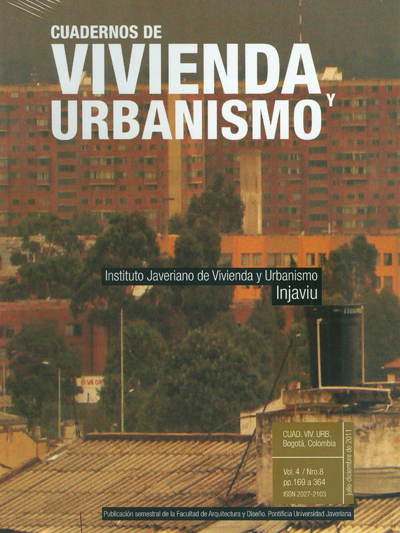Abstract
Este trabajo analiza la vivienda histórica de la frontera de México con Belice. Este es fruto de un proceso de simbiosis arquitectónica entre la casa maya, modelo vernáculo de esta área, y el modelo de bungaló, propio de la colonización británica. Esta arquitectura se desarrolla por los conflictos políticos y cambios económicos y sociales acontecidos en la zona en la segunda mitad del siglo XX, que obligan al traslado de poblaciones a ambos lados de esta frontera. Se trata de una arquitectura habitacional que deviene elemento protagónico en el paisaje para explicar el proceso de ocupación humana dado en este espacio geográfico y su evolución socioeconómica, y que mantiene, hoy en día, numerosos ejemplos.
This journal is registered under a Creative Commons Attribution 4.0 International Public License. Thus, this work may be reproduced, distributed, and publicly shared in digital format, as long as the names of the authors and Pontificia Universidad Javeriana are acknowledged. Others are allowed to quote, adapt, transform, auto-archive, republish, and create based on this material, for any purpose (even commercial ones), provided the authorship is duly acknowledged, a link to the original work is provided, and it is specified if changes have been made. Pontificia Universidad Javeriana does not hold the rights of published works and the authors are solely responsible for the contents of their works; they keep the moral, intellectual, privacy, and publicity rights.
Approving the intervention of the work (review, copy-editing, translation, layout) and the following outreach, are granted through an use license and not through an assignment of rights. This means the journal and Pontificia Universidad Javeriana cannot be held responsible for any ethical malpractice by the authors. As a consequence of the protection granted by the use license, the journal is not required to publish recantations or modify information already published, unless the errata stems from the editorial management process. Publishing contents in this journal does not generate royalties for contributors.


